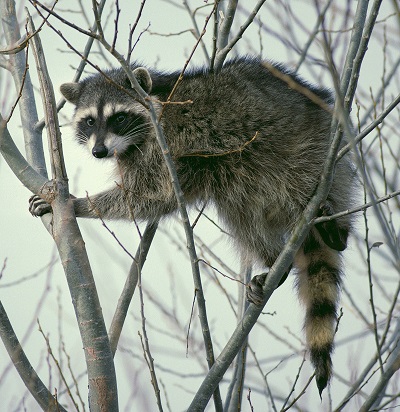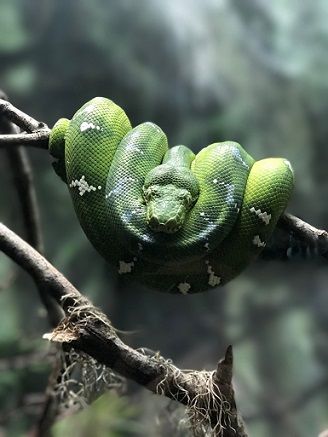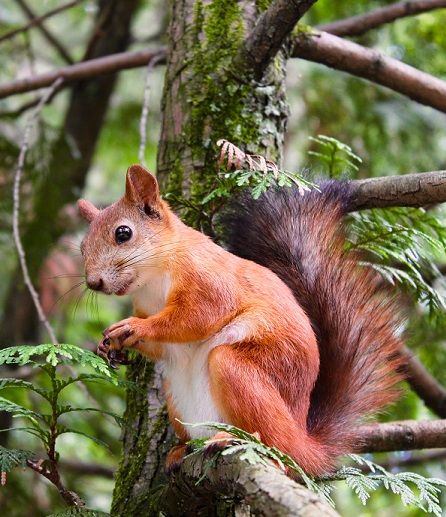10 climbing lessons from the animal kingdom

1. Racoon: Plan your route
Although the racoon may not be the first animal that comes to mind when you think of excellent climbers – they really are. These fuzzy-faced bandits seem to plan their routes before they start, so once they get going they can quickly solve problems with methodical moves.
LESSON
Take a leaf out of the racoon’s book and study your climb before you hit the wall. Try to read the route - carefully considering the different surfaces you’ll face and the best way to traverse potential holds. This will make it much easier to problem-solve once you get up there.

2. Gecko: Gear up
The gecko is a master climber – but it gets more than a little help from its clever feet pads. Their toes are covered in million of tiny hairs that give them great grip on pretty much any surface. Cheaters...
LESSON
Proper footwear is key. Climbing shoes come in a range of shapes and styles – but they all have one thing in common. They come with sticky rubber soles which provide a level of traction and grip that you just can’t get with other type of shoe.
3. Bear: Technique is everything
Bears can teach us a thing or two about the perfect climbing technique. They’ve been filmed scaling rock faces in a perfect x-position – pushing themselves up with their legs and keeping their arms straight.
LESSON
When you start out climbing you’re taught two things: keep your legs bent and your arms straight. This is the most energy-efficient way to climb and will get you far indeed. Unfortunately, it’s easier said than done! We nearly all make the same mistake when we start out: pulling ourselves up with our weak arms, rather than pushing ourselves up with our far stronger pins!

4. Cat: Purrfect your balance
Big cats and small cats alike prefer to be elevated – which means they spend a lot of time climbing, and they know how to do it right. Cats are masters of balance and use their tails as counterweights when climbing or running on narrow ledges.
LESSON
Focus on balance. Maintaining your balance is absolutely crucial whilst climbing – and we can look to our feline tutors for help finding and keeping ours. Whilst kitties can use their tails as a counterbalance, human climbers can focus on their posture and carefully position their own bodies to achieve similar results.
5. Sloths: Take your time
This is so obvious it doesn’t really need saying but sloths are slow climbers – like really, really slow climbers.
LESSON
Take your time. Although climbing is exciting don’t get carried away and rush a route. Instead, try to climb in a slow and controlled style. Practice energy efficiency and careful placement of your hands and feet. Trust us – slow and steady wins this race.


6. Snakes: Stay flexible
Snakes are another one of those seemingly unlikely climbers, but easily scaling surfaces is yet another trick that serpents keep up their sleeves (metaphorically-speaking that is...snakes don’t have sleeves-that would be ridiculous!). Anyway I digress. Snakes climb so well by combining a ‘concertina’ form of locomotion with the flexibility that having hundred of vertebrae provides.
LESSON
Work on your flexibility. Humans only have 33 vertebrae but we can keep our muscles and minds flexible and problem-ready.
7. Squirrels: Keep at it!
If you’ve ever seen a chubby squirrel overcome any and all obstacles to climb onto your beloved bird feeder you’ll know one thing for sure: these furry sneakers just don’t quit.
LESSON


It takes time to overcome a new problem or a tricky route but don’t get discouraged. Be easy on yourself and you’ll get there! The struggle is part of the fun – and believe me, it’s always more satisfying when you’ve eventually conquered a route that had previously seemed impossible.
8. Koala: Stay close to the wall
These sleepy cuties are physically adapted to a life of climbing and feeding amongst the canopies – and they spend a good deal of their time hugging the trunk of their favourite trees.
LESSON
Take a leaf out of the koala’s book and stay close to your climbing surface. Keeping your body as close to the wall as possible will save you strength and you’ll be surprised at how much easier it is to climb when your centre of gravity is working for you and not against you!
9. Monkeys: Get grippy!
Monkeys have evolved prehensile hands, feet and tails that allow them to grip onto branches and climb with ease.
LESSON
Work on your grip skills. Although humans only share our grasping hands with these cheeky creatures – you can make like a monkey and work on your grip skills to improve your climbing performance.

10. Goats: Fancy footwork
Mountain goats are hairy masters of fancy footwork. Although they have a hoof structure that is superbly designed for climbing they’re also very strategic about exactly where they put their feet – even scraping away loose gravel and other potential trip-ups before committing to a foothold.
LESSON
Focus on your footwork. It’s very easy to get lost in the moment when climbing and only focus on the hands in front of your face – at the expense of the feet below you. Thinking carefully about where you put your feet can mean the difference between a fall or smashing that route you’ve had your eye on for while.
Written by Rosie Hendry
